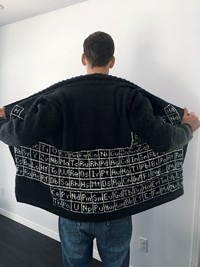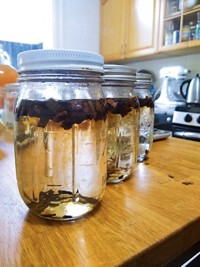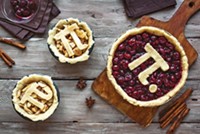Advertisement
Grab your lab coat. Let's get started
Welcome!
Welcome!
Create an account below to get 6 C&EN articles per month, receive newsletters and more - all free.
It seems this is your first time logging in online. Please enter the following information to continue.
As an ACS member you automatically get access to this site. All we need is few more details to create your reading experience.
Not you? Sign in with a different account.
Not you? Sign in with a different account.
ERROR 1
ERROR 1
ERROR 2
ERROR 2
ERROR 2
ERROR 2
ERROR 2
Password and Confirm password must match.
If you have an ACS member number, please enter it here so we can link this account to your membership. (optional)
ERROR 2
ACS values your privacy. By submitting your information, you are gaining access to C&EN and subscribing to our weekly newsletter. We use the information you provide to make your reading experience better, and we will never sell your data to third party members.
Education
Newscripts
Scientific searches for dragon’s blood and the perfect burrito
by Rick Mullin
October 24, 2016
| A version of this story appeared in
Volume 94, Issue 42
Blood of dragon drawn once more

A fifth centenary exhibition of the work of early Netherlandish painter Hieronymus Bosch closed last month at the Prado Museum in Madrid. Central to the exhibit was a triptych titled “The Garden of Earthly Delights.” The painting, thought to depict Earth, heaven, and hell, has generated reams of critical interpretation, with the central vision of paradise and the panel on the right portraying hell drawing much of the attention.
The most straightforward panel, the one on the left representing Earth, shows the Garden of Eden with a Christ-like figure holding the hand of a kneeling Eve whilst Adam sits on the lawn. The tableau is set beneath a strange-looking tree, which may or may not be the Tree of the Knowledge of Good & Evil but is almost certainly, a palm variety found in North Africa and the Canary Islands.
Bosch, an artist and craftsman, would have known the exotic palm as the source of a viscous red pigment known as dragon’s blood. The color, used to depict rubies in paintings, was associated with the blood of Christ. The tree, as it turns out, is one of the least strange elements of Bosch’s triptych, torn, it would seem, from a botanist’s sketchbook.
A modern-day facsimile of dragon’s blood, vermilion, is produced as a pigment from mercury sulfide. But Newscripts has learned that researchers at Columbia University’s Making & Knowing Project have begun making the real thing from the resin of D. cinnabari, using a 16th-century recipe written in Middle French and copied from a manuscript in the National Library of France in Paris.
The Making & Knowing Project (C&EN, Aug. 3, 2015, page 35) is as concerned with the art associated with materials as it is with the science, says Pamela H. Smith, a science historian at Columbia who directs the lab.
“We are definitely interested in the movements of the late-16th/early-17th century in which university-trained people were very interested in the practices of craftspeople, collecting their recipes, their processes, and materials,” Smith says. “At the same time, there was an ambition on the part of craftspeople to be seen as on the same social and intellectual level as people trained at university.”
Smith and her associates are also concerned with the status of craft in a modern world where science and art long ago took separate paths but never left the Garden of Earthly Delights, or the human engagement with natural materials, as Smith describes it.
Scientific search for the perfect burrito
In the final weeks of this year’s presidential election in the U.S., we find ourselves hooked on data. And the 2016 election has offered much in the way of unique metadata. With a prolonged news cycle spinning the enticing idea of taco trucks on every corner, it should come as no surprise that the data are now in on the perfect burrito in the San Diego area.

Earlier this year, Scott Cole, a neuroscience Ph.D. candidate at the University of California, San Diego, introduced a statistical burrito rating system based on a 10-dimensional model. As outlined on his webpage, the 10 factors cover facets of the “majestic cylinder” ranging from wrap integrity to flavor synergy, described as “that magical aspect a great burrito has, making everything come together like it is a gift from the skies.”
Inspired by the statistical website FiveThirtyEight, best known as the poll aggregator we will keep refreshing until Nov. 8, Cole’s data-driven rating system has generated a plethora of bar and pie graphs illustrating the importance of each burrito dimension to overall rating, correlations between cost and volume of burrito, and other factors.
So far, Cole and his team of reviewers have critiqued more than 250 burritos at over 30 San Diego-area restaurants. Leading the pack with the best-rated burritos are California Burritos, the Taco Stand, and Rigoberto’s Taco Shop.
Rick Mullinwrote this week’s column. Please send comments and suggestions to newscripts@acs.org.





Join the conversation
Contact the reporter
Submit a Letter to the Editor for publication
Engage with us on Twitter